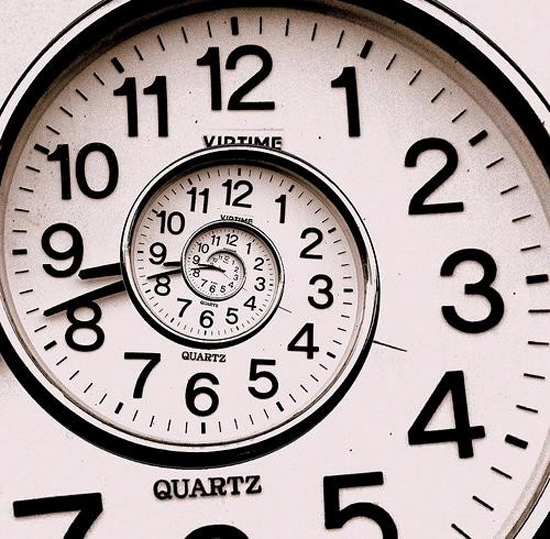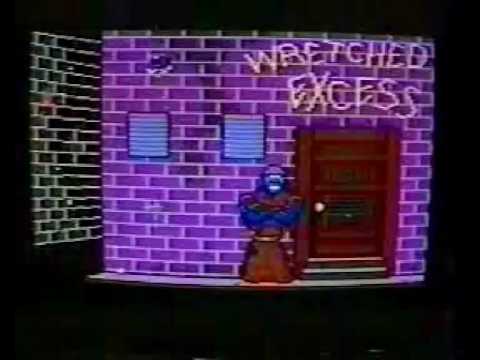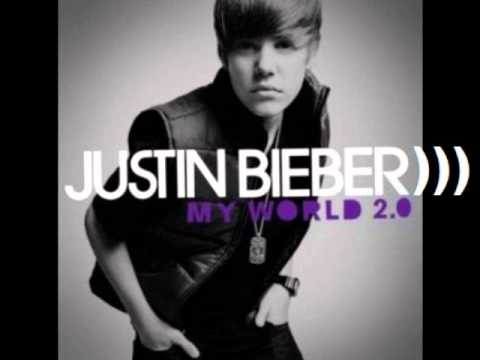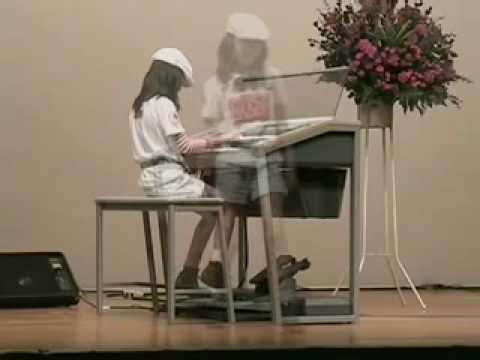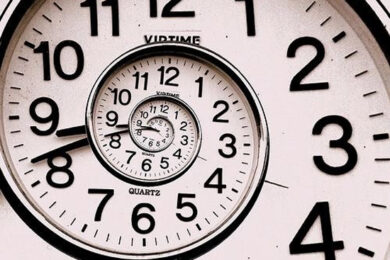"Life moves pretty fast. If you don’t stop and look around once in a while, you could miss it."
Ferris Bueller, Ferris Bueller’s Day Off
"Hey man, slow down. Slow down / Idiot, slow down. Slow down."
Radiohead – ‘The Tourist’
True story: my first word as a child was ‘clock’. Not ‘mommy’, not ‘daddy’, no. At about six months old, I pointed up at the timepiece on the wall – a kitschy 70s wood and ceramic deal with flowers on it, a clock I still have – and distinctly said the word "clock." My folks never miss an opportunity to tell this story, always with the same sense that they’d perhaps spawned something unnatural. I also have vivid memories of my fourth birthday, as I paced around the coffee table, panicked, thinking about how old I’d gotten, and that maybe my best years were already behind me. Since then, I’ve thought a lot about time: about how it seems to fly when I’m having fun, how it drags painfully when I’m doing my taxes, or watching Blur crash the Brits, and how, more and more, it just seems to disappear when I’m online.
After the utopian embrace of the internet over the mid 90s, like a quick hangover, dozens of articles and manuscripts started appearing with warnings of what all these new networked devices might be doing to our brains. Author Nicholas Carr argues in his 2010 book The Shallows that, on the internet, linear thought is being destroyed "like clockwork." He writes: "The distractions in our lives have been proliferating for a long time, but never has there been a medium that, like the Net, has been programmed to so widely scatter our attention and to do it so insistently." Carr cites scores of studies on neuroscience and behaviour, which support his claim that as we flit back and forth from hyperlink to hyperlink, we effectively train our brains to pay attention to trash, with higher level functions like empathy and deliberation – "neural processes that are ‘inherently slow’" – losing out. As the tickers and timelines, updates and newsfeeds that deliver byte-sized information get faster and faster, that time has progressively replaced real time. But no time could be more artificial.
In Technics and Civilization, historian Lewis Mumford harked back to the mechanical clock as the pivotal machine in paving a path toward modernity. Writing in 1934, Mumford said that, in regulating time, the clock was the primary and most powerful device designed to "synchronize the actions of men." Benedictine monasteries across Europe in the mid-1300s used clocks to mark out canonical hours of prayer and devotion – to get into heaven, and live eternally. Yet chronometry shifted focus away from eternal, heavenly time, and toward the commodification of human seconds, minutes, and hours. Inexpensive and mass-produced clocks subsequently proliferated, and in the period leading up to the 19th century, conceptions of temporality progressively became more about accounting, quantifying, dividing labour, and driving military and capital mobility. Mumford writes: "Time as pure duration, time dedicated to contemplation and reverie, time divorced from mechanical operations, was treated as a heinous waste." As time turned from something organic, natural, and everlasting into something to be bought and sold, spent, saved, and maximized, the ideology of speed assumed "a new imperative for industry and ‘progress’… the increase of power and the acceleration of movement became ends in themselves…"
If the modernity marked in the first half of the 20th century was epitomized by increases in power through the acceleration of movement, speed itself moved into hyperspace in the first decade of the 21st. Like speed, on speed. Cultural theorist Paul Virilio thinks that speed means war, and its casualties are cultural. For a recent interview with Vice magazine, he echoed his recurring thesis: "’The faster the better’ is completely false," he said. "The faster you go, the more risks you take… you lose lateral vision." In his 1977 book Speed and Politics, Virilio cautions: "history proceeds at the speed of its weapon systems," perpetuating "a permanent assault on the world, and through it, on human nature." He writes that when haste makes soldiers of citizens, creative and calculative impulses are subsumed under the necessity to make war: "the population’s poetic potential disappears in favor of a military potential." Online, under constant barrages of ads and tweets, sound and video clips and blog posts delivered in ever-shorter order, we become myopic attackers, or defenders, in a perpetual state of emergency, our peripheral vision fading from the margins. A sort of leveling of cultural topographies occurs when there’s less time for consideration and reflection on what’s really important, as always-newer information ticks by. Tick. Tick. Tick…
The thing is, boy howdy, I like the internet. I think it holds powerful and radical promise, particularly when it comes to works of art. Yes, the internet is an inherently fast technology, but the media delivered through it are not invariably so. The internet’s ecology represents the reassurance of eternal time, or at least an imagining of it. It’s what I’m distracted by on the internet – the Twitter-feeding, the Pitchfork-perusing, the YouTube rabbit-holing and Tumblr-tumbling – that is synchronizing and accelerating my actions in that potential sea of eternity, turning me into a Clockwork Orange until I’m blue in the Facebook. Unlike Nicholas Carr, I don’t think the internet itself is destroying our brains; it’s what we do on the internet – and the ever more cunning corporate-controlled media delivery systems, search engines, and taste aggregators that have been designed to make the most of metrics and Big Data by destroying our brains – that’s destroying our brains. If the internet is the baby, the fracturing of online time in the service of capitalism is the bathwater. That dirty, dirty bathwater.
Sunsetcort – ‘End Of Life Entertainment Scenario #1’
When we’re carpet-bombed online with more media, faster, the time allotted to ascertaining the implications behind cultural objects diminishes, leaving our understanding of things vulnerable to prescription rather than negotiation. With accelerating tools of networked assembly, less time is taken to arrive at meaning collectively: we believe immediately that Lana Del Rey sucks but we should still listen to her Joy O remix because it makes her more legit, or that Tyler, The Creator is an arsehole but we should still have respect for him because he has stuff in his mouth. That occurs like clockwork as a function of what Nicholas Carr calls "amplifiers of popularity, quickly establishing and then continually reinforcing a consensus." This is what post-colonial theorist Homi Bhabha describes as the sign’s "synchronous flow of the symbol," where this instantly means that, and finally, this cannot mean anything but that.
Bhabha understands that negotiations of culture take place as much across time as through space. In his 1994 book The Location of Culture, he suggests "time-lag" as a durational site with fearless expectations for interference within this kind of prescriptive, binary logic. Bhabha recognizes that significance is moderated in the "intersubjective realm," the "realm of social discourse," the space and time between you and me and everyone we know. These are the slow times, the in-between times, the real times in which cultural import accumulates, and reconsiderations of the modern ideology of acceleration take shape. Bhabha says: "When the sign ceases the synchronous flow of the symbol, it also seizes the power to elaborate – through the time-lag – new and hybrid agencies and articulations." The internet’s modus operandi is speed (faster bitrates, faster bandwidth), except that doesn’t necessitate its de facto use as ammunition. It is possible to surf the internet peacefully, slowly. I’d encourage it.
Whitney Houston – ‘Exhale’ Chopped and Screwed
Gladly, a profusion of artists, from a wide array of practices, has succeeded in thickening online time, sometimes extremely. Over the past decade, digital music has been slowing down, and lengthening too. With a wealth of cheap audio processing software, time-stretched versions of sickly sweet pop schlock from Justin Bieber and Rebecca Black have cropped up on YouTube, Soundcloud and file sharing sites, transforming them into lengthy and engaging drone pieces. Daniel Lopatin’s Sunsetcorp alter ego produced a series of ‘echo jams’ based on slowing down and looping adult contemporary tracks from the 80s. Lately, DJ Screw’s style of slowed and throwed hip-hop remains on the palettes of artists like Evian Christ and Clams Casino. Even Burial’s latest work represents some of his slowest, longest songs – a phenomenon not lost on his audience and critics. Last October, Tim Hecker delivered a free guest mix to XLR8R entitled ‘Really Eternal Music / Your Bloated Hard Drive,’ a 10-hour resampled version of La Monte Young and Marian Zazeela’s The Black Record. In advance of its release in April, Bear In Heaven have been streaming their upcoming album I Love You, It’s Cool since early December, time shifting the original recording by 400,000 percent. Billed as "the first full-length mp3 album," Terre Thaemlitz will put out Soulnessless this coming May: a piece that apparently clocks in at over 30 hours. And this month, the AV Festival’s 12th incarnation, titled ‘As Slow As Possible,’ includes multiple tributes to John Cage’s 100th birthday, and a 744-hour ‘boredcast’ curated by artist Vicki Bennett. Even those descriptions seemed like they took awhile.
Through slowness, multiple critiques upon the creed of speed become possible. On one hand, to be "behind time" or "outside history" is to be denied access to its record, where your story is excluded from his-story. On the other, through the time-lag, opportunities emerge for revision of dominant historical narratives, and the integration of outlying voices of resistance. Homi Bhabha writes: "When the dialectic of modernity is brought to a standstill, then the temporal action of modernity–its progressive, future drive–is staged, revealing ‘everything that is involved in the act of staging per se.’" As (the artist behind slowing down Justin Beiber’s "U Smile" by 800%) Nick Pittsinger so succinctly put it in an interview with EW: "When you slow down a video by 800 or 1,000 percent, every detail is seen – you see exactly how stuff breaks or people sneeze." Everything that’s grotesque about the quick consolidation of power is chopped, and screwed, and exposed in all its glorious horror.
Nick Pittsinger’s ‘U Smile’
Slow cultural movements have been active in various forms for at least the last quarter century. The Slow Food Movement emerged out of Italy in the 70s, with Carlo Petrini and a group of left-wing radicals protesting the fast-food industry, and its extensive social and environmental consequences. Delivered in 1989, the Slow Food Manifesto suggests: "suitable doses of guaranteed sensual pleasure and slow, long-lasting enjoyment preserve us from the contagion of the multitude who mistake frenzy for efficiency." Other slow movements have ambled along too, from slow cities to slow reading, slow art, slow sex (yes, Nicole Daedone’s 2011 book Slow Sex promises: "in just fifteen minutes a day, you can improve your sex life") and, more to the point, slow media. A quick Google search (because there isn’t a slow one quite yet) reveals hundreds of websites dedicated in one form or another to delaying the agitating pace of new media. Most of these endorse regimens of "digital detox," "media diets," and all-out "unplugging." And while those strategies are compelling, they hardly suggest a path forward, admitting that many of us neither can nor want to go back to watching VHS tapes, or typing on a typewriter – at least not as much more than an exercise in nostalgia. That sounds too dangerously close to retromania for residual media, a retreat from the front lines. Even though I still love Polaroid film, vinyl records, and snail mail, I’m not about to give up my iPhone, my iPhone, or my iPhone.
Sunsetcorp – ‘Time Stand Still’
I imagine that the art practices discussed above are far more promising interventions. Here, digital technologies, social networks, search engines, and other corporate-owned channels that provide quick media access become unwitting accomplices in an oppositional slow agenda. Most of this work isn’t major label fare either; it’s usually offered up for free, or distributed independently via surrogate forms. And one of the noteworthy things about these types of slow media is that they are inherently digital: they rely just as much on the speed of the internet and its infrastructure, while operating half a step outside prevailing capitalist modes of distribution – or slowly within them, jamming the net’s fast mechanics, revealing its limitations, and resisting the click. This is a slow media movement against the acceleration of time, and toward its restoration in the eternal; exposing the cracks in the internet’s clockwork account of real time, and in the interim, fulfilling its promise of time without end.
If the significance of works of art is determined between people, actively, socially, slowly, then cultural value arrives stretched out: it takes time for meaning to grow on things. So, after Bhabha’s concept of time lag, I want to call this slow art ‘com lagged’. It is not, like other instances of slow media, opposed to ideas of technological progress or futurity. Whether through modifications in timescale, or by reproducing audio of extreme duration, these are works elongated by artists using computers, and disseminating decidedly within the digital domain. The scales of time represented by Nick Pittsinger, Tim Hecker, Terre Thaemlitz, Bear in Heaven, and Vicki Bennett would have been far more complex to execute using strictly analogue forms and formats. When works of art are slowed down, they wedge time in between the binary sign the symbol, between the 0 and the 1, between the work of art and its symbolic weight, allowing for interpolated articulations and cumulative revisions to be made. And I’d argue that com lagged music is indeed closer to the spirit of other slow movements, which are rooted in pleasure, locality, quality, sustainability, and timelessness. If art is food for thought, then slow art, especially against the backdrop of a fast-fuelled internet, might be as nourishing for the mind as slow food is for the body.
The Olsen Twins, "Gimme Pizza," Slowed
It’s fitting that com lagged artworks should be gaining serious traction in the midst of the Occupy movement, a constellation of resistance that until recently has been focused on the occupation of places. Writing last November on Critical Inquiry‘s blog ‘In The Moment,’ Jason Adams holds that the triumph of this ongoing struggle will rely upon repossessing collective time as much as collective space: "There is a reason, for instance, that the clock towers were the first target chosen by the French communards." Adams states: "While today’s accelerated capitalism attempts to intensify accumulation through continuously revamped social communication technologies, with each new innovation it also enables its reversal by movements like Occupy. This is why accelerated capitalism is faced with a ‘counter-temporality’…" If the fracturing, splintering, and subdividing of internet time is the productive site of capital for digital media corporations, then works of slow art that circulate on their peripheries assist in the construction of a counter-temporal space, occupying online time for the pleasure and benefit of the social subject rather than the corporate conglomerate.
I was born with a sense that my time was running out. Not long ago, I too began blaming the speed of the internet and its corresponding mobile, digital technologies. But then I realized that the problem wasn’t being able to do more, faster; it was that, faster and faster, I was spending more of my own precious time doing more of less. And it now seems that more of us want to occupy our online time in more profound, thoughtful, and meaningful ways. Com lagged art does that by encouraging naturally slow, insightful, reflective, meditative processes – those that foster the deliberative thinking necessary for our higher human functions – and enabling a more lateral vision of history. We need to slow the internet down, and should probably hurry up about it.
Acknowledgements: This article was shaped with the generous assistance of Charles Acland, Mitchell Akiyama, Craig Campbell, Ryan Connolly, Tim Hecker, Christine Mitchell, Patti Schmidt, William Straw, and Sylvain Verstricht, to whom I am eternally grateful.

